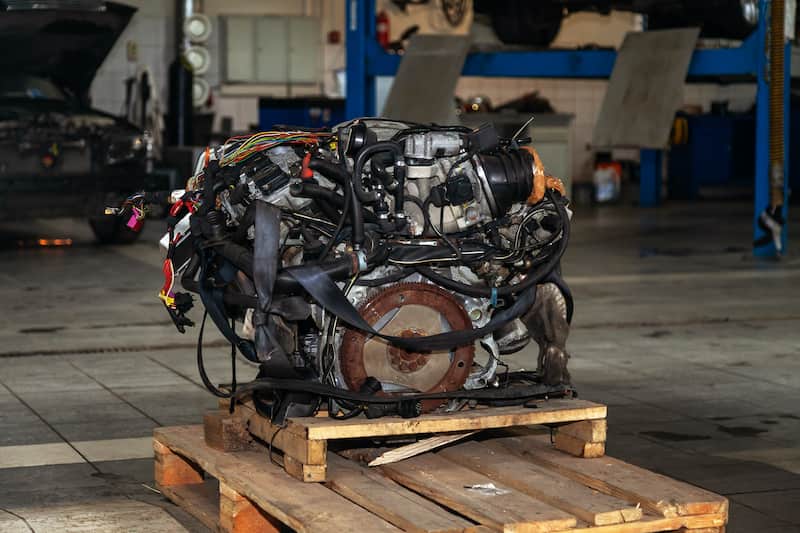If you are facing a problem with your camshaft position sensor, then this guide is for you. Here we will discuss what it is, its failure symptoms, and replacing camshaft sensor . The engine in your car is a precisely crafted device with numerous fragile components. A number of issues could arise if one of those components’ malfunctions. The camshaft position sensor is one of these components. Your camshaft position sensor (CPS) may malfunction if the engine stalls regularly, idles harshly, loses power, accelerates slowly, screeches, or makes a wheezing noise.
Table of Contents
ToggleWhat Is Camshaft Position Sensor?
A camshaft position sensor is a tool used to establish the camshaft’s location. The computer in the engine uses this data to regulate functions like fuel injection and valve timing. The engine may stall out or run rough.
The hall effect governs how this sensor operates. A magnetic field is produced when the camshaft rotates because it moves the armature. As the ring gear is detected by the sensor, the voltage reading is adjusted. The Hall effect sensor and this field interact to give the computer information about the speed of the camshaft rotation. The transmitter device receives a recording of the voltage change and transmits it. After analysing in a transmitter device, the voltage signal generates the data.
Location of Camshaft Position Sensor
The camshaft position and rotation tracking are done using a camshaft position sensor. The sensor is situated close to the cylinder head. It is easy to read the timing rotor and camshaft at this place. Nevertheless, installing the sensor depends on the model and its location in the car engine.

The electronic control unit (ECU) decodes the signal as the camshaft angle. Using these sensor signals will give an understanding of the cylinder.
This sensor scans the cylinder on the expansion stroke in a modern engine with auto start and stops technology. When you accelerate, it helps to deliver fuel and advance the spark. A malfunctioning camshaft sensor alerts you to the problem before it becomes unusable.
Checking Camshaft Position Sensor
There are a few things you can do to inspect your camshaft position sensor if you’re unsure if it’s faulty or not. Visually viewing the sensor is one of the simplest ways to test it. On top of the engine, close to the front of the vehicle, is where you’ll find the camshaft position sensor. Two wire leads emerge from the little, cylindrical object. If there is rusting or any damage, then the sensor requires replacement.
Utilizing an automobile scan tool is another method of testing the camshaft position sensor. This device can read and identify issues with the vehicle’s different sensors. You can check for camshaft position sensor-related errors by hooking into the diagnostic port under the dash. If any codes appear on the tool, then it implies that the camshaft position sensor is broken and requires replacing camshaft sensor.
Symptoms of a Defective Camshaft Position Sensor
Common signs of a bad camshaft position sensor that can lead to replacing camshaft sensor include the following:
- Check Service Engine Soon Light
- Ignition issues
- Surging or Jerking
- Engine Stalling
- Poor Acceleration
- Gear Shifting Issues
- Poor Fuel Economy
Several factors can also impact the operation of the camshaft position sensor, such as:
- Water damage
- Tear and Wear
- Short circuit damage
- Metallic Corrosion
- Fire or Bad Spark damage
- Car Engine Overheating or Melting
- Engine Oil Leakage
However, the engine oil leak is the leading cause of sensor circuit failure. If engine components are loose, then engine oil can leak and influence the sensor. Thus, it will halt or lessen the sensor’s ability to send signals.

Replacing Camshaft Sensor
Camshaft Position Sensor Removal
Step 1: First, find the sensor. The camshaft position sensor is typically installed in the block or cylinder head, depending on the engine architecture.
Step 2: Disconnect the negative battery cable and place it aside.
Step 3: Unplug the electrical connector for the sensor. Slide the electrical connector off by pressing down on the tab.
Step 4: Using a wrench or ratchet and socket of the proper size, remove the sensor mounting screws.
Step 5: Pull the sensor straight out of the engine to remove it.
Changing Camshaft Position Sensor
Step 6: The bolt flange should align with the mounting hole as you push the new sensor straight in.
Step 7: Using a wrench or ratchet and socket of the right size, attach the sensor mounting screws. Then, fasten the mounting screws for the sensor.
Step 8: Reinstall the electrical connector.
Step 9: At last, reconnect the battery’s negative terminal.
Frequently Asked Questions (FAQs)
What is the average price for replacing a camshaft position sensor?
The cost of the parts can range from $50 to $100, depending on the automobile.
Approximate labor costs range from $40 to $200. Therefore, the total expenses can go as high as $90 to $300.
Can you replace Camshaft Position Sensors by yourself?
Yes, replacing the camshaft position sensor is an easy task, and practically anyone can do it. So, if you go for DIY, you can avoid the minimum labor rate that a dealership or repair business will charge you. Moreover, replacing it should take 5 to 10 minutes.
What to do after replacing camshaft sensor?
Every piece of equipment attached to the vehicle requires routine maintenance. After changing the camshaft position sensor, clean the sensor with a cleaning solution and dry it before attaching it.










